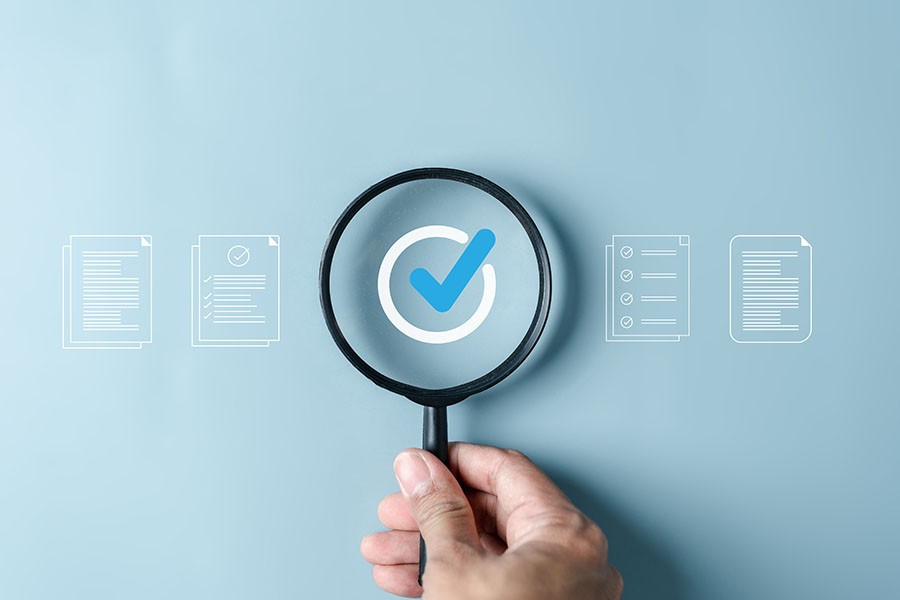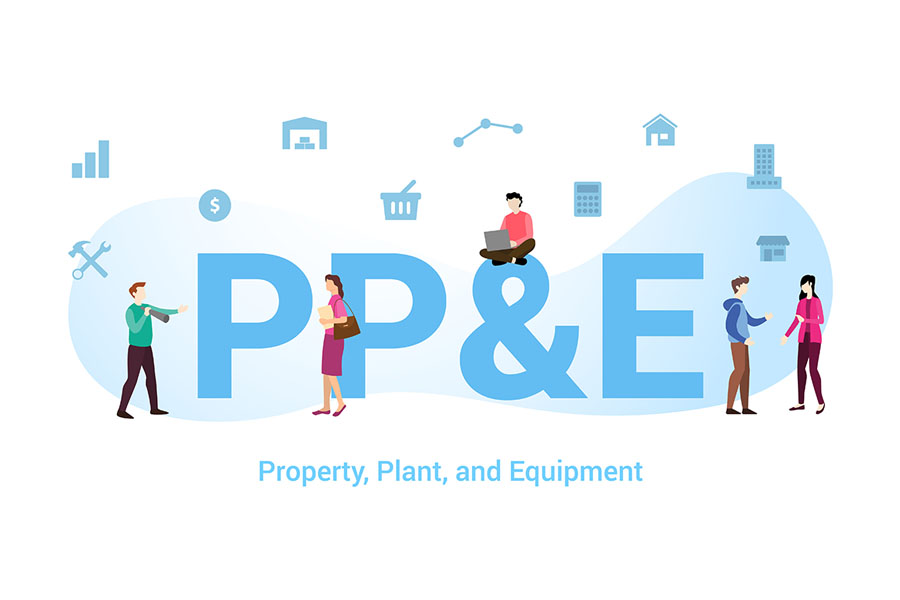The cash purchase price and sales price of equipment are both shown in the investing section of the cash flow statement. However, if all or a portion of an equipment purchase is financed, that portion has no cash flow effect and is excluded from the cash flow statement—but it is reported either as disclosure in the notes to the financial statements or a footnote, whichever is more convenient. On cash flow statements prepared using the indirect method, any loss or gain on the sale of equipment appears in the operating section as a reconciling item between net income and cash flow from operations.
Purchase of Equipment
The effect of the purchase of equipment on the cash flow statement depends on whether cash was involved in the purchase. If you financed the purchase through a loan or installment, cash will only be affected once you pay the loan or installment amount.
Cash Purchase
Equipment purchased using cash is a cash outflow for investing activities. The amount paid represents a negative charge in net cash flow for investing activities, which reduces your overall cash flow. Take note the equipment purchase is deducted and tagged as “net cash outflow.” Paying cash is an outflow, and receiving cash is an inflow.
Happy Company purchased equipment for $55,000. It has a net cash inflow of $257,000 for operating activities and net cash outflow of $48,000 for financing activities. If the beginning cash balance of Happy Company is $81,000, how much is the ending cash balance?
HAPPY COMPANY Cash Flow Statement For the period ended December 31, 20x1 | ||
Net cash inflow for operating activities | $257,000 | |
Investing activities | ||
Equipment purchase | ($55,000) | |
Net cash outflow from investing activities | ($55,000) | |
Net cash outflow for financing activities | ($48,000) | |
Net increase (decrease) in cash | $154,000 | |
Add: Beginning cash balance | $81,000 | |
ENDING CASH BALANCE | $235,000 | |
Financed Purchase
Seller-financed purchases are noncash investing and financing transactions, according to ASC Accounting Standards Codification 230. That means that if the purchase of equipment is financed, then the transaction will not appear in the face of the statement of cash flow. Rather, mere disclosure of the transaction already meets the required cash flow reporting objectives.
Partially-financed Purchase
If the seller didn’t finance the whole transaction, the cash paid is an investing cash outflow.
Gondor Company purchased a sophisticated machine that cost $50,000. The seller agreed to finance the purchase as long as Gondor Company can pay at least 20% of the selling price. Gondor Company agreed to pay the 20% down payment ($10,000); the rest will be financed.
How do we properly account for this transaction?
- The down payment of $10,000 will be considered as a cash outflow in the investing activities section.
- The remaining $40,000 financed by the seller must only be disclosed in the notes to the financial statements to make readers aware that such a transaction occurred.
Future payments made on the machinery loan will appear in the financing section of the cash flow statement.
Sale of Equipment
For clarity, the context of “sale” in this section refers to the disposal of equipment, not the sale of equipment as part of the ordinary course of business. If you sell equipment as your main line of business, all cash flows from those sales go to the operating activities section of the cash flow statement.
Selling equipment that was used for operations and administrative purposes has two effects on the cash flow statement.
- The proceeds from the sale are a cash inflow in the investing section.
- The gain or loss on the sale is a reconciling item between net income and cash flow in the operating section.
The special treatment for gain or loss on sale is only considered when using the indirect method of preparing the operating activities section of the cash flow statement. Under the direct method, gains and losses are ignored.
Sale at a Gain
A gain on sale of equipment means that the selling price is higher than the equipment’s adjusted basis. The sales price is a cash inflow in the investing section of the cash flow statement, which is pretty straightforward. The gain appears as a negative amount in the operating section, and the reason for this is a little more complicated.
The operating section of the cash flow statement is not a report of the direct cash inflows and outflows. Instead, it starts with net income from operations—which must match the profit and loss statement—and then shows the adjustments necessary to arrive at the cash flow from operations. Since the gain on the sale increased net income but not cash, the gain is a negative adjustment in the operating section of the cash flow statement.
Adele Company sold equipment with an adjusted basis of $7,000 for $10,000, resulting in a gain on sale of $3,000. Below are other items related to cash flow:
- Net income: $25,000
- Depreciation recorded before sale: $1,000
- Beginning cash balance: $8,000
Prepare Adele’s cash flow statement.
ADELE COMPANY Cash Flow Statement For the period ended December 31, 20x1 | ||
Operating activities: | ||
Net income | $25,000 | |
Add: Depreciation expense | $1,000 | |
Less: Gain on sale of equipment | ($3,000) | |
Net cash flow for operating activities | $23,000 | |
Investing activities: | ||
Proceeds from sale of equipment | $10,000 | |
Net cash flow for investing activities | $10,000 | |
Financing activities: | ||
Net cash flow for financing activities | $0 | |
Increase (decrease) in cash | $33,000 | |
Add: Beginning cash balance | $8,000 | |
ENDING CASH BALANCE | $41,000 | |
Notes:
- Depreciation expense is a noncash expense in the income statement, so we add it back to net income to reconcile with cash flow. Read our article on the effect of depreciation on cash flow to learn more.
- We deducted the gain because it has no cash flow impact, yet it was added to net income.
- The proceeds of the sale are added as a cash inflow.
Sale at a Loss
When you sell at a loss, the selling price is less than the adjusted basis of the equipment. The loss recognized from the sale should be added back to net income in the operating activities section and proceed as a cash inflow for investing activities. It’s a positive adjustment in the operating section because it reduced net income but had no effect on cash flow.
Adele sold equipment with an adjusted basis of $7,000 for $3,000, resulting in a loss on sale of $4,000. Below are other items related to cash flow:
- Net income: $18,000
- Depreciation recorded before sale: $1,000
- Beginning cash balance: $8,000
Compute Adele’s ending cash balance.
ADELE COMPANY Cash Flow Statement For the period ended December 31, 20x1 | ||
Operating activities: | ||
Net income | $18,000 | |
Add: Depreciation expense | $1,000 | |
Less: Gain on sale of equipment | $4,000 | |
Net cash flow for operating activities | $23,000 | |
Investing activities: | ||
Proceeds of sale of equipment | $3,000 | |
Net cash flow for investing activities | $3,000 | |
Financing activities: | $0 | |
Net cash flow for financing activities | ||
Increase (decrease) in cash | $26,000 | |
Add: Beginning cash balance | $8,000 | |
ENDING CASH BALANCE | $34,000 | |
Frequently Asked Questions (FAQs)
A sale of equipment affects cash flow in two ways. First, the proceeds of the sale are added to the investing activities section. Second, any gain or loss resulting from the sale should be removed from net income in the operating activities section of the cash flow statement if the indirect method is used. In the direct method, gains and losses are ignored.
The cash purchase of equipment goes to the investing activities section of the cash flow statement. If the purchase is financed, accounting standards dictate that such a transaction is a noncash transaction and is not reported in the cash flow statement.
No, the sale of equipment is not an operating activity. Rather, the proceeds from the sale are a cash inflow in the investing section of the cash flow statement. However, any gain or loss on the sale must be shown in the operating cash flow section as an adjustment to net income.
Bottom Line
The purchase of equipment affects cash flow only if cash is used to pay for the purchase. Financed purchases are considered noncash activities, which only require disclosure in the financial statements. On the other hand, the sale of equipment always affects the investing activities section and the operating section if there is a gain or loss on the sale.


